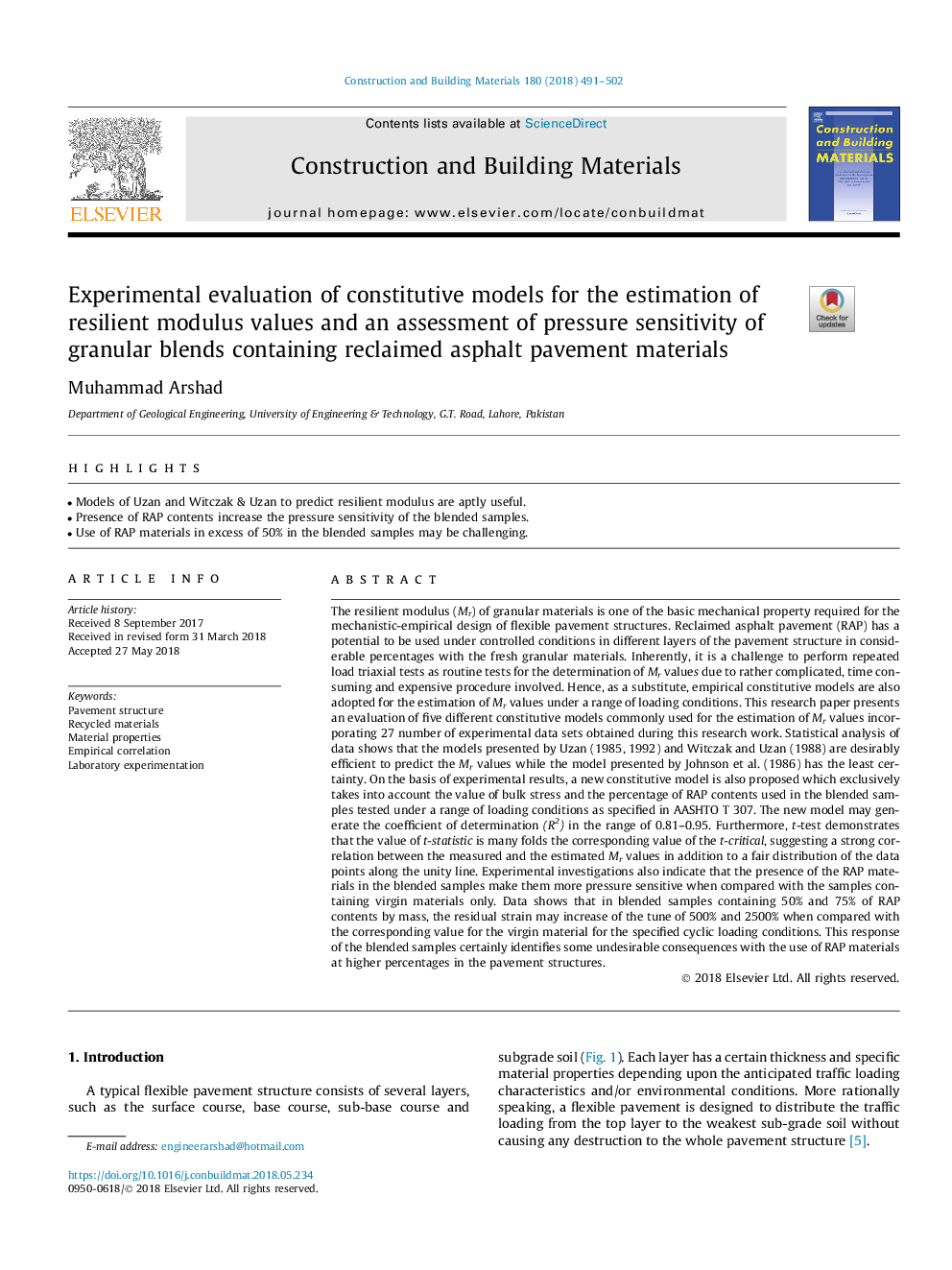| Article ID | Journal | Published Year | Pages | File Type |
|---|---|---|---|---|
| 6712634 | Construction and Building Materials | 2018 | 12 Pages |
Abstract
The resilient modulus (Mr) of granular materials is one of the basic mechanical property required for the mechanistic-empirical design of flexible pavement structures. Reclaimed asphalt pavement (RAP) has a potential to be used under controlled conditions in different layers of the pavement structure in considerable percentages with the fresh granular materials. Inherently, it is a challenge to perform repeated load triaxial tests as routine tests for the determination of Mr values due to rather complicated, time consuming and expensive procedure involved. Hence, as a substitute, empirical constitutive models are also adopted for the estimation of Mr values under a range of loading conditions. This research paper presents an evaluation of five different constitutive models commonly used for the estimation of Mr values incorporating 27 number of experimental data sets obtained during this research work. Statistical analysis of data shows that the models presented by Uzan (1985, 1992) and Witczak and Uzan (1988) are desirably efficient to predict the Mr values while the model presented by Johnson et al. (1986) has the least certainty. On the basis of experimental results, a new constitutive model is also proposed which exclusively takes into account the value of bulk stress and the percentage of RAP contents used in the blended samples tested under a range of loading conditions as specified in AASHTO T 307. The new model may generate the coefficient of determination (R2) in the range of 0.81-0.95. Furthermore, t-test demonstrates that the value of t-statistic is many folds the corresponding value of the t-critical, suggesting a strong correlation between the measured and the estimated Mr values in addition to a fair distribution of the data points along the unity line. Experimental investigations also indicate that the presence of the RAP materials in the blended samples make them more pressure sensitive when compared with the samples containing virgin materials only. Data shows that in blended samples containing 50% and 75% of RAP contents by mass, the residual strain may increase of the tune of 500% and 2500% when compared with the corresponding value for the virgin material for the specified cyclic loading conditions. This response of the blended samples certainly identifies some undesirable consequences with the use of RAP materials at higher percentages in the pavement structures.
Keywords
Related Topics
Physical Sciences and Engineering
Engineering
Civil and Structural Engineering
Authors
Muhammad Arshad,
